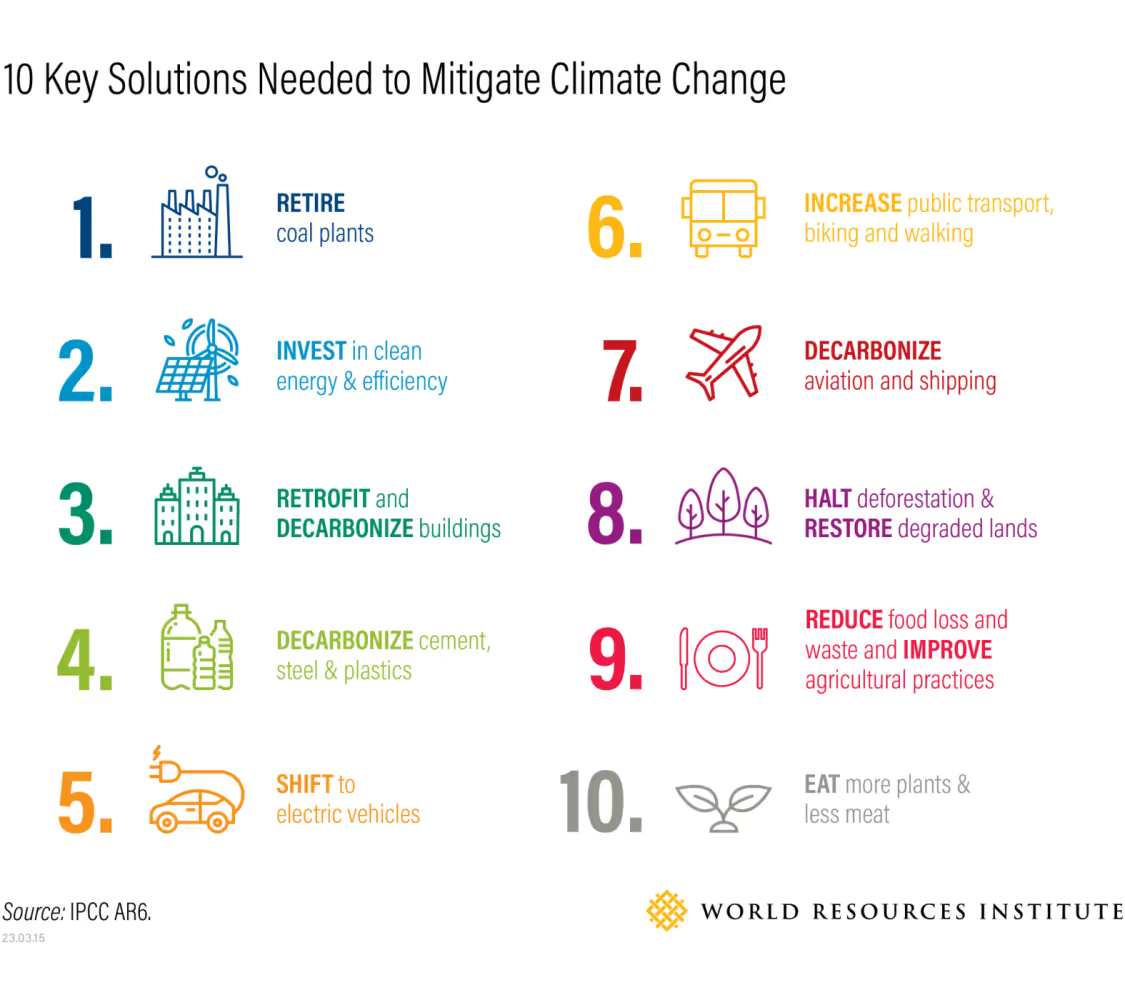In today’s climate-conscious world, businesses must understand and report on their carbon footprint in order to remain competitive. As sustainability becomes a pivotal element of corporate strategy, grasping the full spectrum of GHG emission scopes and categories is critical. This knowledge equips companies to effectively navigate the intricate landscape of environmental impact, ensuring they can take meaningful actions toward a more sustainable future. Accordingly, this article demystifies the complexities of GHG emission scopes and their categories, serving as an essential resource for businesses committed to reducing their ecological footprint.
What are GHG emissions?
Greenhouse gases (GHGs) are gases in the atmosphere that contribute to the greenhouse effect and warm the planet. Carbon dioxide (CO2), ozone (O3), methane (CH4), and nitrous oxide (N2O) are the main gases that drive the increase in atmospheric temperature. According to the IPCC report, an estimated 59 billion tonnes of GHGs were emitted in 2019, with a large portion being carbon dioxide.
The three scopes of emissions for carbon accounting
As categorised by the Greenhouse Gas Protocol, the world’s most widely used GHG accounting standard, GHG emissions are divided into Scope 1, 2 & 3 emissions:
- Scope 1 emissions are direct emissions that originate from sources owned or controlled by an organisation, such as emissions from combustion in owned or controlled boilers, furnaces, vehicles, etc. By quantifying Scope 1 emissions, organisations gain insight into their internal carbon footprint, enabling targeted reduction strategies.
- Scope 2 emissions are indirect emissions from the generation of purchased electricity, steam, heating, and cooling consumed by the reporting company. These emissions occur at the facility where electricity is generated, not at the point of consumption by the reporting company.
- Scope 3 includes all other indirect emissions that occur in an organisation's value chain. These emissions are a consequence of the company's activities but occur from sources not owned or controlled by the company. Scope 3 includes both upstream and downstream emissions linked to the company’s operations, such as the extraction and production of purchased materials and fuels, transport-related activities in vehicles not owned or controlled by the company, electricity-related activities (not included in Scope 2) for the production of goods sold by the company, outsourced activities, waste disposal, etc.

Scopes 1, 2 & 3 according to the GHG Protocol.
Credit: Plan A
As outlined within the table below, Scope 3 emissions are further divided into 15 categories, as outlined in the Corporate Value Chain (Scope 3) Standard, which helps organisations identify and engage with the relevant parts of their value chain.
GHG Scope 3 categories: Upstream activities
GHG Scope 3 categories: Downstream activities
What are Scope 4 emissions?
Scope 4 emissions, also known as ‘avoided emissions,’ introduce a novel dimension to carbon accounting by focusing on the emissions reductions achieved via the use of a company’s products or services. For example, if a company manufactures an energy-efficient appliance, the emissions saved by consumers using this appliance instead of a less efficient model are considered Scope 4 emissions. Unlike Scopes 1, 2, and 3, which address emissions directly or indirectly associated with a company’s operations, Scope 4 considers the positive environmental impact of its offerings.
How can companies calculate their GHG emissions?
For companies to calculate their GHG emissions, they must first set the boundaries of what they will measure. Next, the organisation must collect data on their direct emissions, the energy they purchase, and all other indirect emissions linked to their operations. By applying specific emission factors to this data, companies can determine the amount of emissions in terms of carbon dioxide equivalent. These calculations help companies understand and report their impact on the environment, which is crucial for making informed decisions on reducing their carbon footprint.

Credit: Plan A
As recommended by the World Resources Institute, companies looking to reduce their GHG emissions can adopt various effective strategies. These include making their operations more energy-efficient, using renewable energy, and improving waste management practices. Companies can also optimise their transportation, engage employees in sustainability efforts and involve their suppliers in their environmental goals – all of which can be done efficiently via investing in innovative sustainability technologies. Meanwhile, regularly reporting on decarbonisation progress and setting clear reduction targets is crucial for transparency and continuous improvement, and can be automated via sustainability software.

Today, numerous software solutions provide features such as sophisticated emissions methodologies that cover multiple regions and are grounded in up-to-date climate science. While companies typically used spreadsheets for manual calculations in the past, a method that was both time-consuming and susceptible to errors in data entry and calculations. Additionally, these older methods often utilised generic emissions intensity estimates, neglecting emissions variations based on region and specific activities. Hence, software solutions provide an automated alternative that frees up valuable time and resources.
Moreover, reporting and reducing carbon emissions is time-consuming, challenging, and deserves close expertise, and sustainability software enables companies to simply disclose their corporate carbon footprint for regulatory reporting and share progress to stakeholders via a centralised platform.
In a world increasingly defined by environmental imperatives, understanding and accounting for GHG emissions is no longer optional for businesses. By embracing the evolving landscape of emission scopes and categories, companies can not only mitigate their environmental footprint but also drive innovation, enhance stakeholder trust, and pave the way towards a sustainable future. As companies look to reduce their emissions, it is critical that innovative technologies such as carbon management software is leveraged to meet sustainability goals and gain a competitive edge.
Plan A offers unique tools to reduce your carbon emissions per scope. To efficiently measure and reduce your emissions today, schedule a call to see Plan A's Carbon Management Platform in action.
.avif)








